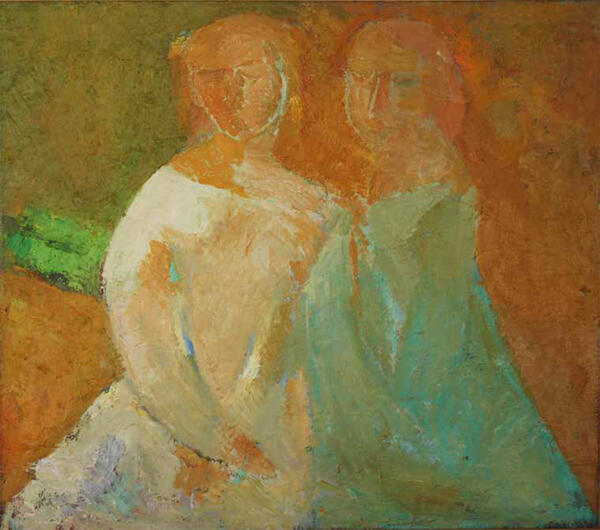Alexander Sergeyevich Bekasov was born in Kostroma in 1955. He discovered an interest for the fine arts early in his life. He was exposed to painting at the Shlein Children’s Art School, from which he moved onto the Art and Graphic Faculty of the Nekrasov Kostroma Pedagogical Institute.
At the institute, he was taught by artists with strong personalities: Fyodor Yakovlevich Korablyov and Vladimir Ilyich Lytnev. During the 1970s and 1980s, these people raised a plethora of talented young people.
Alexander Bekasov’s formative years as an artist happened to fall on the mid-1980s — the time when the shackles of ideological pressure had been taken off and the road to freedom of artistic pursuit seemed clear. Together with a group of like-minded artists, he continued going along the path that emerged in Russian art in the mid-1960s and marked a turn towards an existential and metaphorical interpretation of art, the realization of art beyond time and space.
The followers of this movement have chosen to interpret reality in general philosophical and aesthetic aspects. Personal spiritual experience became the main subject of art. Together with his friends Pavel Alexandrovich Belyaev and Nikolai Alexandrovich Kasatkin, the artist found himself in the epicenter of the youth movement.
Alexander Bekasov was one of the organizers of the “scandalous” exhibition at the museum of the village of Krasnoye-na-Volge in 1986. He also participated in experimental exhibitions of young artists in 1988, 1989, and “Synthesis” of 1989. These events stirred up and changed the art scene of Kostroma.
At the heart of the
artist’s visual thinking is the desire for the highest possible level of
generalization, that evolves into a symbol — a formula of expressiveness. The
author himself said:



